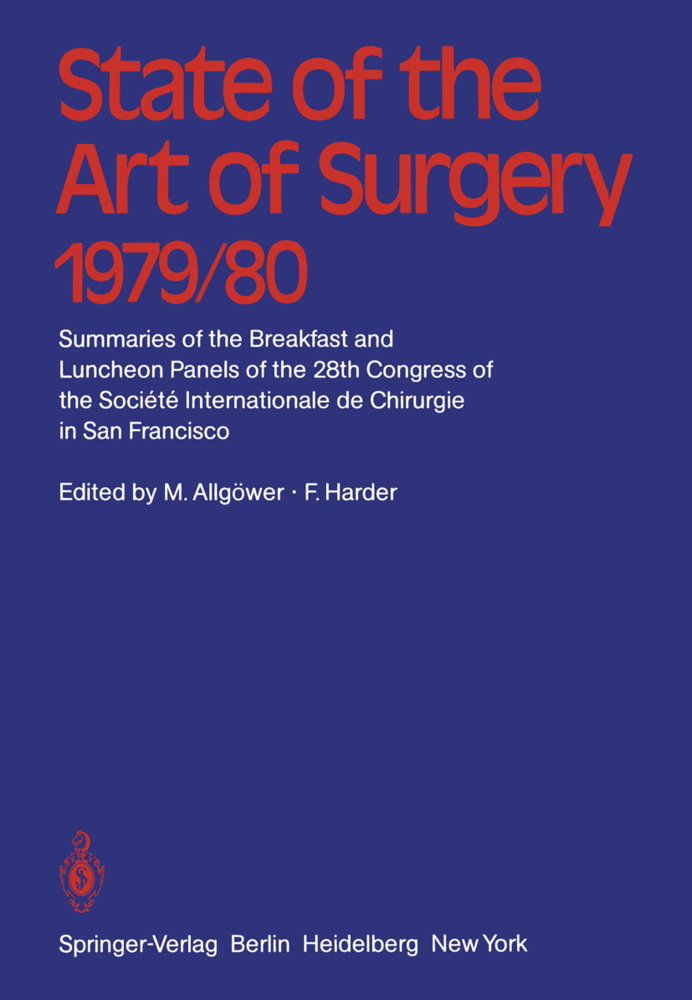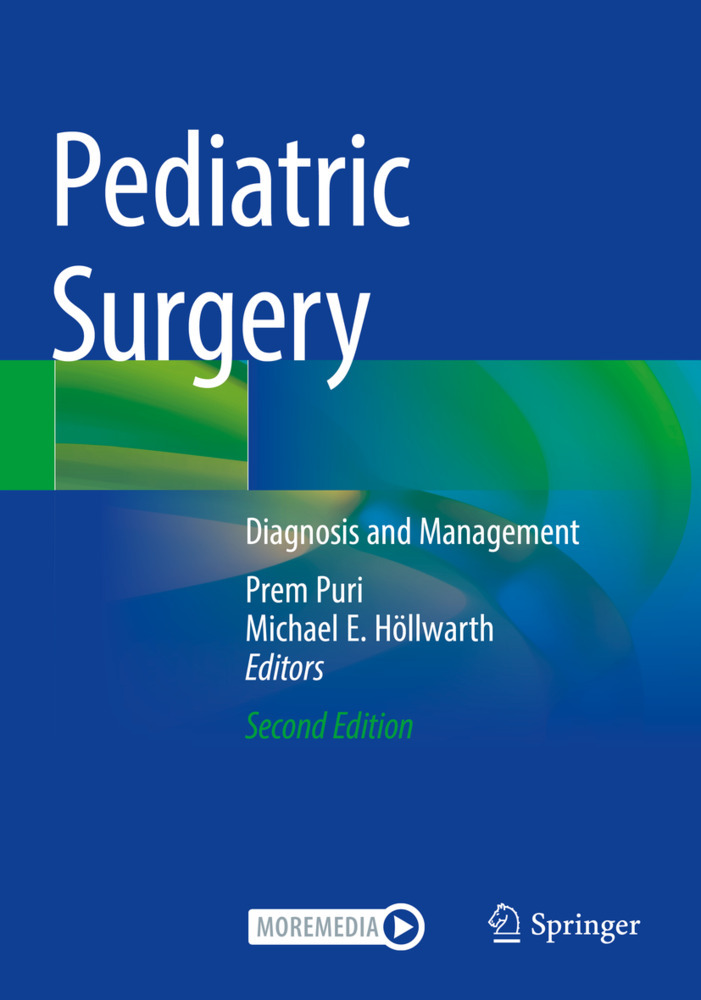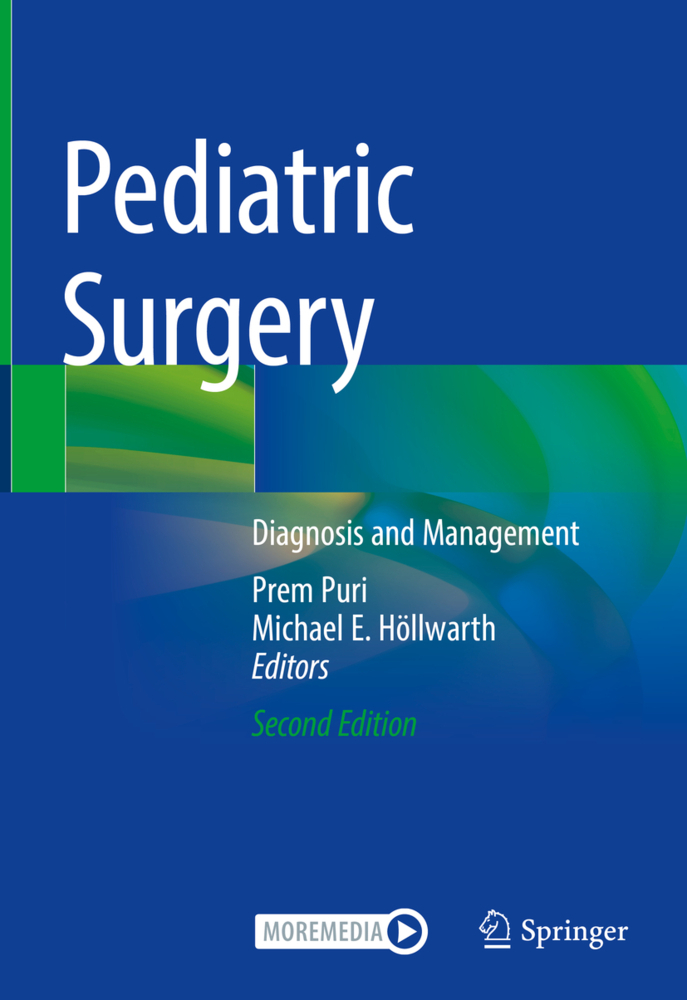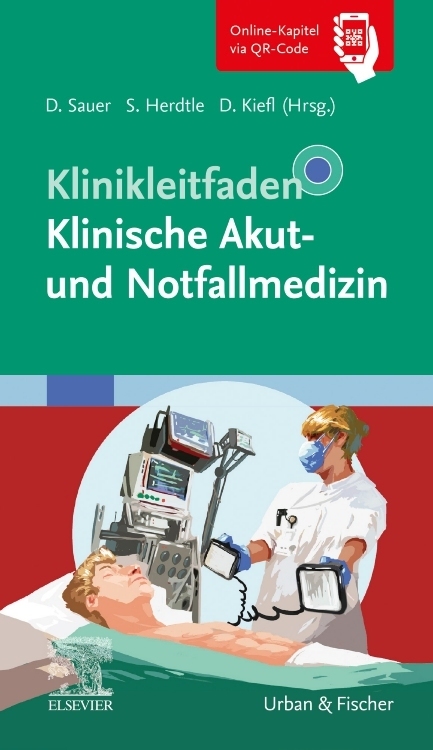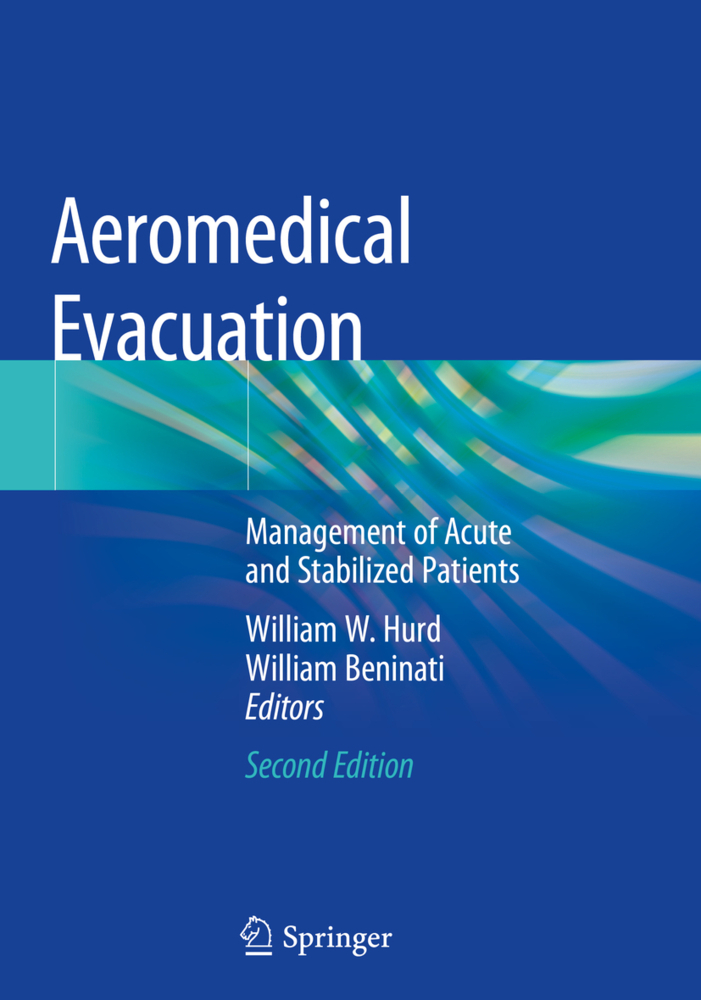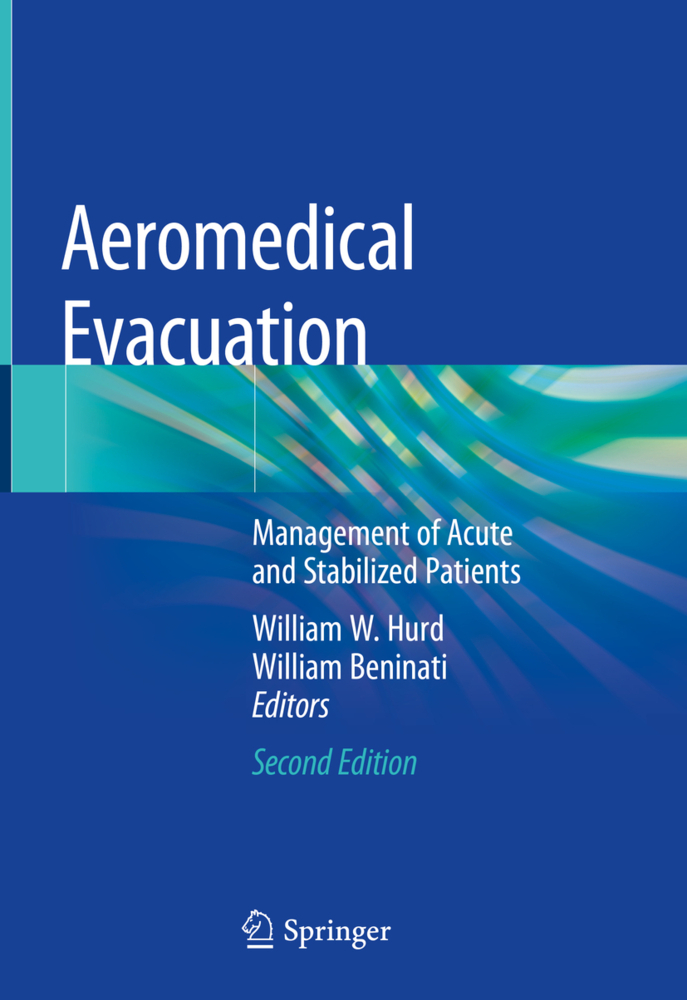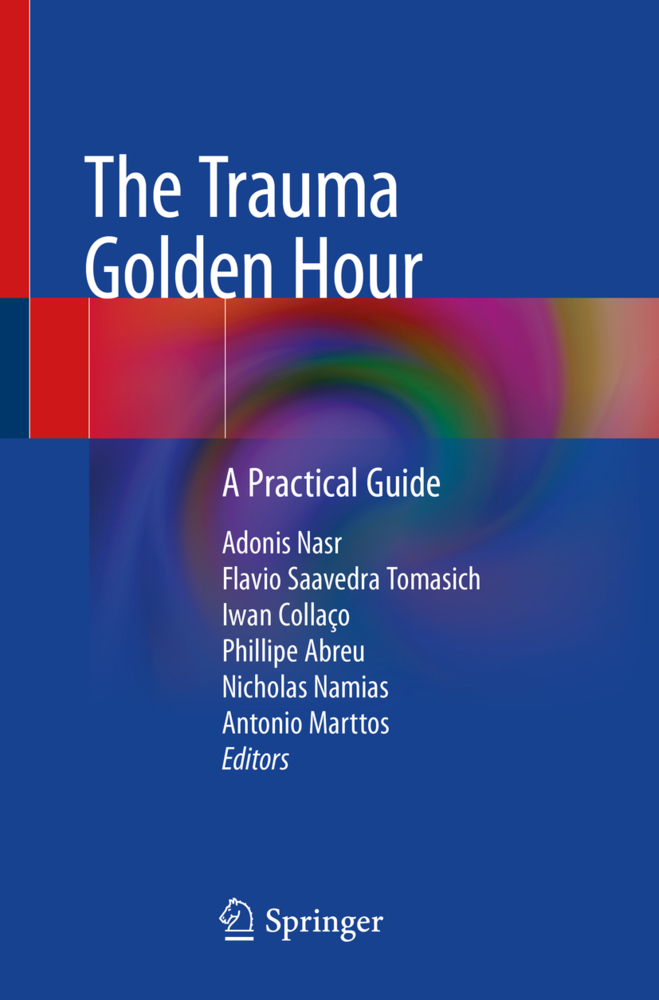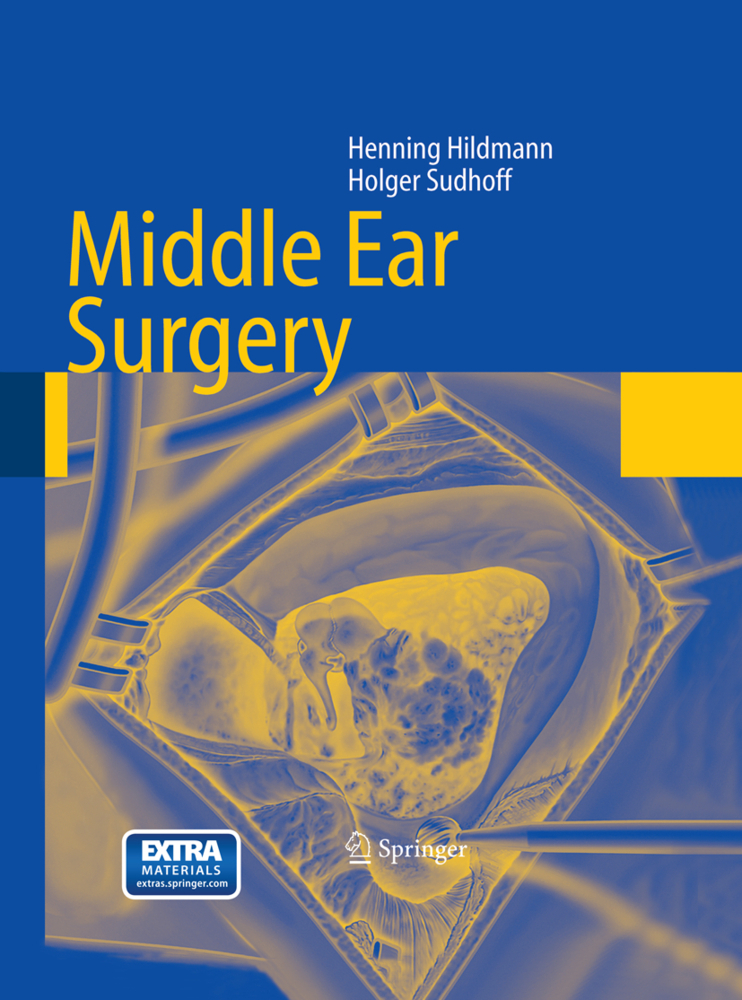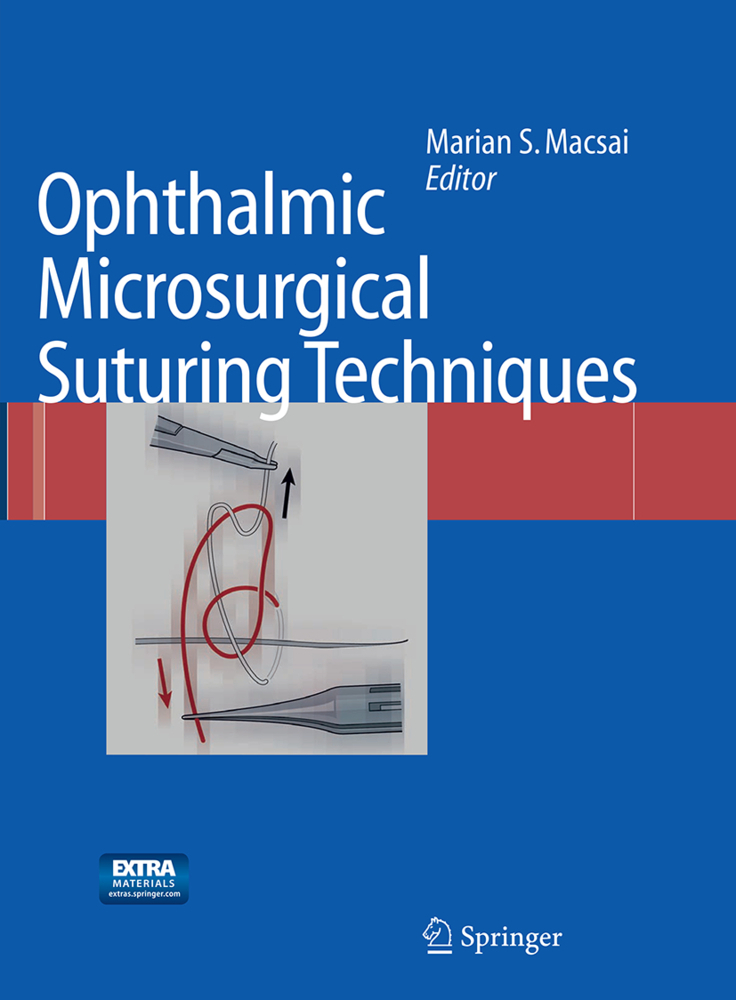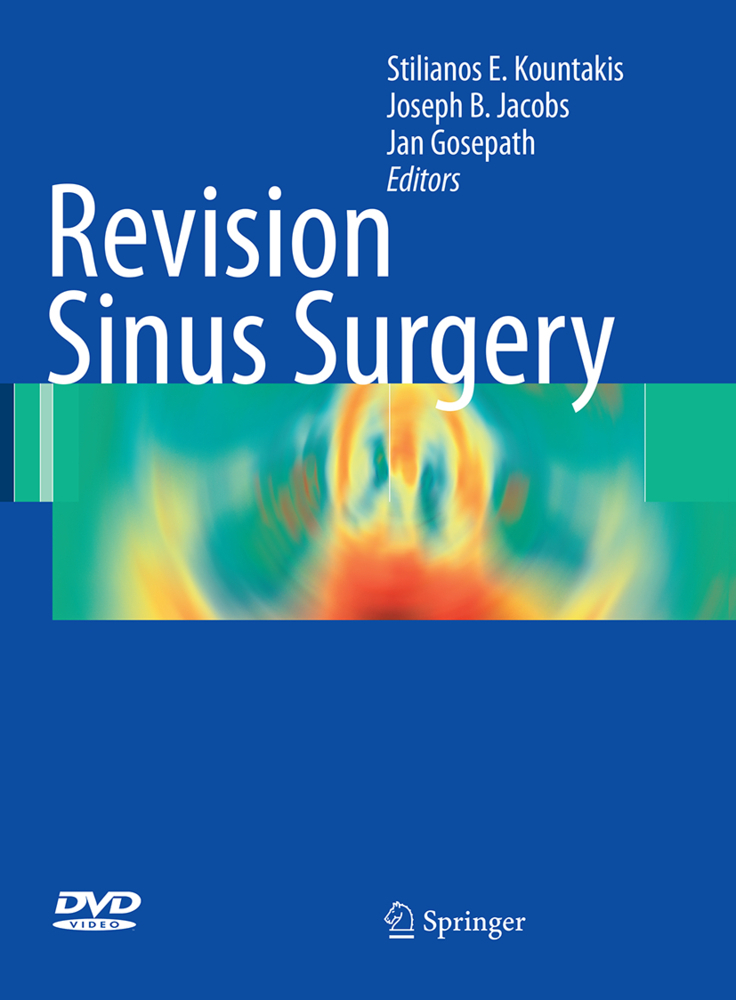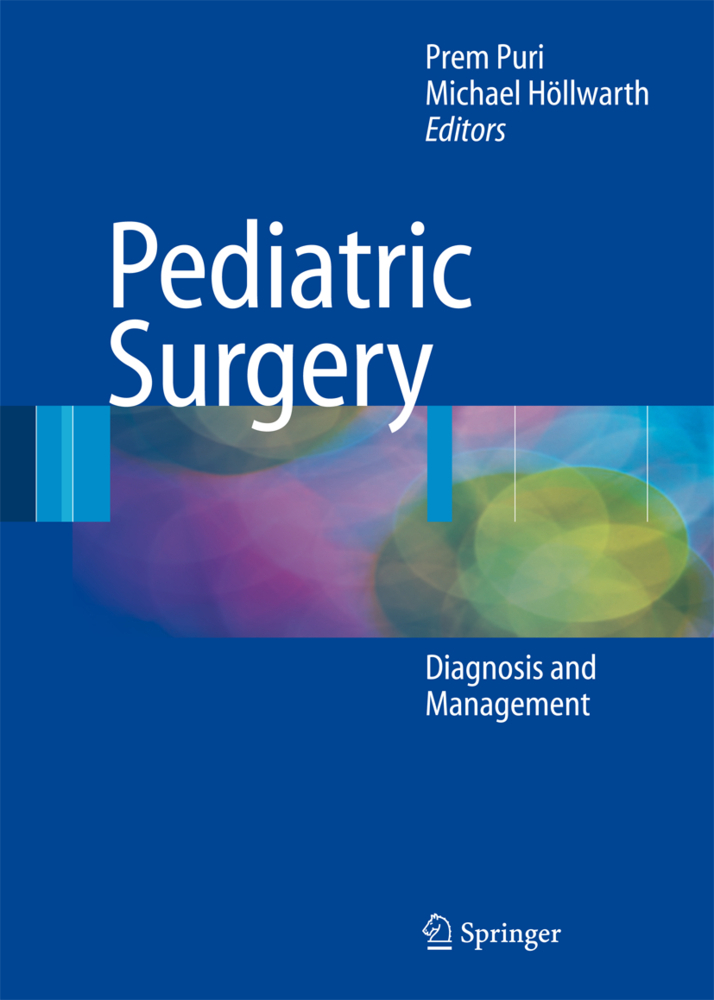State of the Art of Surgery 1979/80
Summaries of the Breakfast and Luncheon Panels of the 28th Congress of the Société Internationale de Chiurgie in San Francisco
State of the Art of Surgery 1979/80
Summaries of the Breakfast and Luncheon Panels of the 28th Congress of the Société Internationale de Chiurgie in San Francisco
International surgical meetings with thousands of participants speaking a dozen different languages tend to be frustrating for the individual who comes with the hope of learning about progress in his fields, but who additionally would like to be able to ex change ideas on controversial topics and to meet competent people with whom to discuss specific problems. In the "one-way" ses sions in which long papers are presented, details or specific points may be missed. Differing views often are not adequately discussed, because the meeting and its participants are pressed for time. The 44 breakfast and luncheon sessions, covering different topics of interest to the practicing surgeon, were mainly planned to overcome these classical "congress handicaps" and also to do away with the anonymous atmosphere of such a large congress. Slides and formal papers were banished from these sessions. The outcome of these very lively and pleasant discussions taking place around small well-dressed tables was unexpected by most participants. A chairman and several panel members shared their repast, caloric and intellectual, with some 10-30 congress par ticipants. The result was in each instance a lively, informative intimate discussion, very different from the anonymous atmo sphere of a large meeting. In the hope of preserving these ex changes, the chairmen were requested immediately the session finished to "distill the essence" of the 90-minute exchange into a summary captured on tape.
B 18 Trauma Surgery, a Speciality - if Yes, Whose?
B 17 Transplantation - a Full-Time Job?
L 29 Surgical Oncology - a Speciality?
B 19 How to Teach Surgical Skills and How to Qualify a Surgeon in Training?
B 9 When, How, and How Much Research During Surgical Training?
B 11 Aequanimitas and "Autosabotage" as a Challenge in Self-Education
L 28 How Can We Solve the Language Problem at International Medical Meetings?
B 42 Motivation of the Surgeon - What Incentives Make Him Function "Optimally" in the Interest of the Community He Serves?
2 Surgery of the Gastrointestinal Tract
B 20 Optimal Procedure in Peptic Esophageal Stenosis
B 44 Optimal Method of Replacement of the Esophagus in Cancer
L 30 Operative Tactics in Gastric Cancer - Problems of Gastric Replacement
B 7 Dealing with the Perforated Gastroduodenal Ulcer
B 37 Is Intraoperative Testing for Completeness of Vagotomy Any Good?
B 38 Modern Approach to the Diagnosis of Prolonged Jaundice
B 5 Total Pancreatectomy: Indication and Early and Late Postoperative Problems
B 3 Hemobilia: Diagn. Procedures and Surgical Strategy
B 40 Tactical Steps in Liver Resection - Use of Laser
L 26 When and How to Plan Operations in Crohn's Disease
B 15 How Extensive Should Surgery of Colon Malignancies Be?
L 27 Dealing with the Perforated Colon
L 25 Local Procedures for Anorectal Malignancies
B 39 Stoma Problems
B 16 Sphincterotomy in Benign Anal Diseases - When and How?
B 8 Abdominal Drainage Procedures After Operation - When, Where, and by What Means?
3 Endocrine Surgery, Metabolism, Shock
B 12 Evaluation and Decisions During Surgery of "Cold Nodules" in Thyroid Surgery.-B 36 Evaluation and Decisions During Parathyroid Surgery
B 41 What Approach to Use and What Pitfalls to Avoid in Surgery of the Suprarenals?
B 2 How Do You Get a Diabetic Patient Ready for Emergency Surgery?
B 35 Criteria for Evaluating Acute Shock States
L 31 Colloids or Not for Resuscitation?
4 Bronchial Carcinoma
B 22 What Is Left of Mediastinoscopy?
L 32 Principles of Radicality in Resection of Bronchial Carcinoma
5 Breast Cancer
B 4 Preservation of the Breast in the Treatment of Breast Cancer
6 Microsurgery
L 33 Reconstructive Microsurgery
7 Trauma
B 21 How to Stabilize the Crushed Thorax
B 1 Priorities in Preoperative Treatment and Timing of Operation in the Patient with Fracture of the Proximal Femur
L 24 Strategy in Approaching and Dealing with the Abdomen After Blunt Trauma
L 23 Is There Any Merit in Different Treatment in the Acutely Burned?
B 14 How to Avoid Ugly Scars - How to Treat Keloids?
8 Suture Material, Infection, Thromboembolism
B 6 What Suture Material Do You Use for What Tissue?
B 34 Skin Preparation for Surgery
B 13 Prevention of Postoperative Infection in Major Surgery - Recent Advances
B 43 What Should I Do for Prevention of Thromboembolic Complications?.
1 Concepts in Surgical Education and Practice
B 10 How to Define General Surgery?B 18 Trauma Surgery, a Speciality - if Yes, Whose?
B 17 Transplantation - a Full-Time Job?
L 29 Surgical Oncology - a Speciality?
B 19 How to Teach Surgical Skills and How to Qualify a Surgeon in Training?
B 9 When, How, and How Much Research During Surgical Training?
B 11 Aequanimitas and "Autosabotage" as a Challenge in Self-Education
L 28 How Can We Solve the Language Problem at International Medical Meetings?
B 42 Motivation of the Surgeon - What Incentives Make Him Function "Optimally" in the Interest of the Community He Serves?
2 Surgery of the Gastrointestinal Tract
B 20 Optimal Procedure in Peptic Esophageal Stenosis
B 44 Optimal Method of Replacement of the Esophagus in Cancer
L 30 Operative Tactics in Gastric Cancer - Problems of Gastric Replacement
B 7 Dealing with the Perforated Gastroduodenal Ulcer
B 37 Is Intraoperative Testing for Completeness of Vagotomy Any Good?
B 38 Modern Approach to the Diagnosis of Prolonged Jaundice
B 5 Total Pancreatectomy: Indication and Early and Late Postoperative Problems
B 3 Hemobilia: Diagn. Procedures and Surgical Strategy
B 40 Tactical Steps in Liver Resection - Use of Laser
L 26 When and How to Plan Operations in Crohn's Disease
B 15 How Extensive Should Surgery of Colon Malignancies Be?
L 27 Dealing with the Perforated Colon
L 25 Local Procedures for Anorectal Malignancies
B 39 Stoma Problems
B 16 Sphincterotomy in Benign Anal Diseases - When and How?
B 8 Abdominal Drainage Procedures After Operation - When, Where, and by What Means?
3 Endocrine Surgery, Metabolism, Shock
B 12 Evaluation and Decisions During Surgery of "Cold Nodules" in Thyroid Surgery.-B 36 Evaluation and Decisions During Parathyroid Surgery
B 41 What Approach to Use and What Pitfalls to Avoid in Surgery of the Suprarenals?
B 2 How Do You Get a Diabetic Patient Ready for Emergency Surgery?
B 35 Criteria for Evaluating Acute Shock States
L 31 Colloids or Not for Resuscitation?
4 Bronchial Carcinoma
B 22 What Is Left of Mediastinoscopy?
L 32 Principles of Radicality in Resection of Bronchial Carcinoma
5 Breast Cancer
B 4 Preservation of the Breast in the Treatment of Breast Cancer
6 Microsurgery
L 33 Reconstructive Microsurgery
7 Trauma
B 21 How to Stabilize the Crushed Thorax
B 1 Priorities in Preoperative Treatment and Timing of Operation in the Patient with Fracture of the Proximal Femur
L 24 Strategy in Approaching and Dealing with the Abdomen After Blunt Trauma
L 23 Is There Any Merit in Different Treatment in the Acutely Burned?
B 14 How to Avoid Ugly Scars - How to Treat Keloids?
8 Suture Material, Infection, Thromboembolism
B 6 What Suture Material Do You Use for What Tissue?
B 34 Skin Preparation for Surgery
B 13 Prevention of Postoperative Infection in Major Surgery - Recent Advances
B 43 What Should I Do for Prevention of Thromboembolic Complications?.
| ISBN | 978-3-540-10136-9 |
|---|---|
| Medientyp | Buch |
| Copyrightjahr | 1980 |
| Verlag | Springer, Berlin |
| Umfang | X, 118 Seiten |
| Sprache | Englisch |

